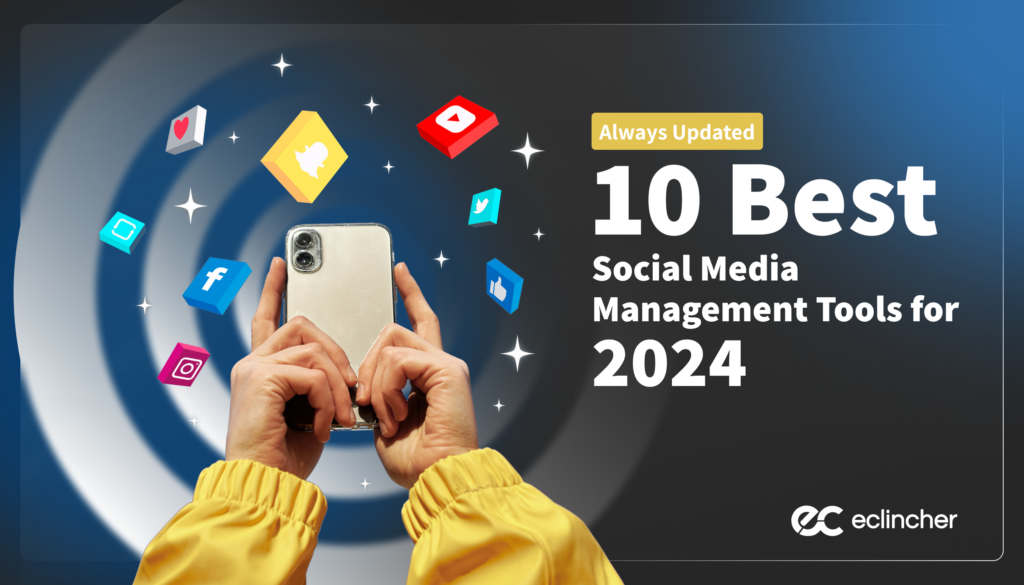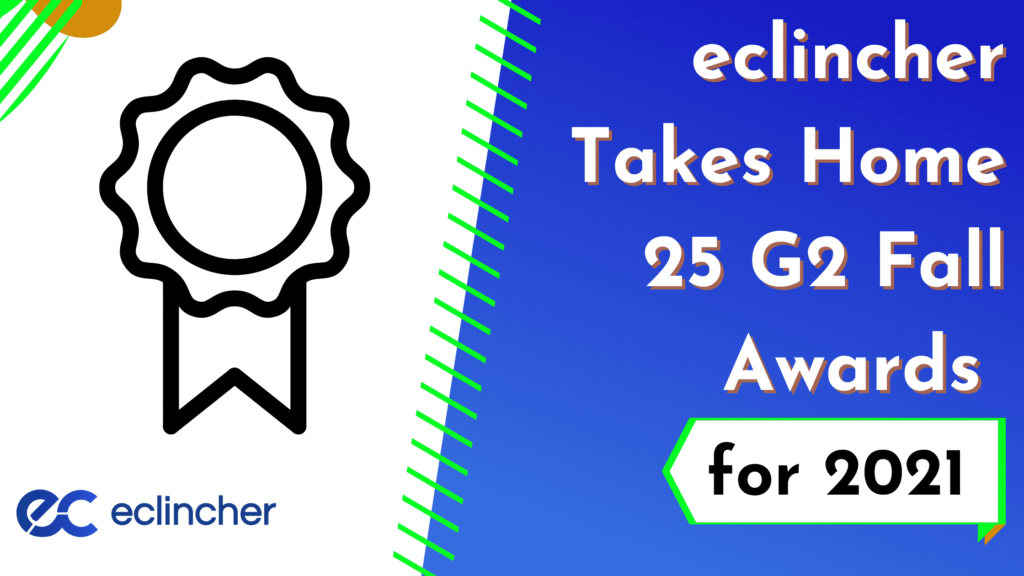In this day and age, webinars are highly essential for businesses. Presented as a video workshop, lecture, or online-based seminar, webinars are where brands share knowledge, provide new ideas, and give updates to people. They’re also used to build and nurture relationships, establish authority and credibility, demonstrate products and services, grow an audience base, or generate leads and conversions.
For a webinar to be effective and interesting, it should leave people feeling positive and inspired to take action. It should provide a new take on an existing niche, a discussion on a current issue, an informative demo of how-tos or DIYs, or an interview of an industry leader.
If you’re looking to organize, host, or speak at a webinar, here are 10 tips you can implement to make sure it’s an effective one.
![10 Tips for Planning A Webinar [Webinar Checklist] webinar audio equipment](https://eclincher.com/wp-content/uploads/2020/05/webinar-audio-equipment-1024x768.jpg)
How to Plan for Your Next Webinar
1. Go With a Specific Topic
First of all, choose a specific topic you can discuss in great detail. Keep it aligned with the purpose of your webinar – whether to improve brand awareness, generate leads, promote new offerings, or share new knowledge.
Here are some things to consider when choosing a topic:
- It’s related to the nature of your business.
- It demonstrates your expertise and authority.
- The topic fits the needs and interests of your target audience.
- It provides fresh, useful, and valuable information.
For topic ideas, revisit your existing content to see which ones gained higher attention and audience engagement. You can review FAQs, search Google Analytics, run online polls, or collaborate with your customer service or sales team to know what people are raving about. You may also check what your competitors are doing or attend other webinars for inspiration.
Remember, when choosing a topic, be as precise as possible. This will help you stay focused and allow people to understand what they’re signing up for or why they need to attend. It also helps you to zero in on the right audience.
![10 Tips for Planning A Webinar [Webinar Checklist] woman taking notes at laptop](https://eclincher.com/wp-content/uploads/2020/05/woman-taking-notes-at-laptop-1024x683.jpg)
2. Select Your Format
Next, decide on how you will deliver the webinar.
Single speaker format, recommended for smaller audiences, involves one person delivering the content and answering all questions.
This is similar to dual presenters, where two people share their knowledge and engage with the viewers.
Panel discussions have multiple speakers discussing their ideas on a topic with a moderator facilitating the webinar.
Other formats include a Q&A webinar, where an expert answers questions raised by the viewers; an interview format, where the host asks predetermined queries to the speakers; or product demos, where you promote your item or give tutorials.
Remember, choose one that you (or your presenters) will be comfortable with and will help you to effectively deliver the message.
3. Choose a Platform
From free tools like Skype and Google Hangout to high-ranking platforms like Demio, WebinarJam, and GoToWebinar, there are lots of options available today, so take time to assess each of their pros and cons.
Consider these when deciding which platform to go with:
- How many attendees can it accommodate?
- Does it have the features you need – screen/slide sharing, session recording, viewer survey, the ability of participants to ask questions?
- Does the audio have web-streaming or dial-in phone options? Will you be able to change speakers easily?
- How much is your budget?
Your chosen platform plays a key role in the webinar’s success, so make sure it fits the purpose and objectives of your webinar.
![10 Tips for Planning A Webinar [Webinar Checklist] webinar meeting on smartphone](https://eclincher.com/wp-content/uploads/2020/05/webinar-meeting-on-smartphone-1024x701.jpg)
4. Finalize Your Presenters and Team
Whether they’re industry experts, company executives, or you yourself, the speakers need to be skilled and knowledgeable about the topic. They should be credible and charismatic, can speak authoritatively and answer tough questions, and are comfortable in front of the camera.
It’s also essential to dedicate a support team who’ll help ensure the success of your webinar.
The organizer is responsible for most, if not all of, the logistics of the webinar – from developing the content and locating speakers, to marketing the event and communicating with participants afterward.
The facilitator is tasked to introduce the presenters, moderate the Q&A session, and encourage audience participation.
Finally, the assistants are responsible for answering technical questions, for example, about the audio and video quality of the session.
Having all these roles filled doesn’t guarantee a smooth sailing webinar. It does, however, help ensure that everything is in place and assistance is immediately available when needed.
5. Prepare Your Space and Equipment…
Whether you’re hosting from your office or at home, make sure you’re in a quiet and professional setting that’s conducive for a webinar. Choose a room where there’s no background noise and where people can’t interrupt you. Keep the space clean and clutter-free and your notifications muted so you won’t be distracted during the session.
Similarly, have a working laptop camera so people can see you visibly during the webinar. It’s recommended to use a separate microphone, instead of the built-in ones, as they have better quality and are less likely to get cut off.
It’s vital to keep a backup laptop, batteries, and power cables accessible, to ensure things run well even if you experience technical difficulties. Also, make sure that your internet connection is stable so you won’t have to worry about going offline anytime in the session.
Most importantly, consider testing everything before you go live, so you can make adjustments where necessary. Remember, having the right equipment and being in the right space can help improve the quality of your webinar and ensure a great learning experience for your viewers.
6. …And Your Content
Begin by having an outline of sub-ideas about your chosen topic. Webinars are time-bound (usually about 40-60 minutes), so it’s helpful to have a list of points you will include.
If you’re the organizer, align with the speakers in the weeks prior to determine the agenda and order of presenters, the duration for each segment, and material deadlines.
Next, create eye-catching and powerful presentation visuals. Include an introductory slide for details like start time, duration, and how to join the audio. Have a slide or two about the presenters, and do a quick overview of what topics will be discussed. Be sure to also include pictures, videos, charts, or graphs when applicable. Additionally, consider using bullet points, instead of paragraph-long texts, to strengthen and emphasize your ideas.
Essentially, your content is the heart and soul of your webinar, and the deck is your main tool for engaging with the audience, so these should be really captivating and visually interesting.
Bonus Tip: Allocate a few minutes at the end of the session for Q&A, in case the participants have some things to clarify. Some interactive webinar platforms like Vimeo make it possible to host Q&As, polls, and other activities that increase participant engagement during your webinars.
7. Promote Your Webinar and Get Sign-Ups
The next step is to determine how attendees can register for your event. Some webinars have built-in registration features, while others might need a separate sign-up tool.
You also need to market your webinar to help garner more participants. Consider these methods to promote your event:
- Dedicate a website or landing page to share details about the topic, speakers, event date, program flow, fees, and other important details.
- Create banners or pop-up ads on your website with a clear CTA like “Save The Date” or “Sign Up Today.”
- Post on your social media channels to inform your followers. Include a relevant hashtag, which you can use before, during, and after the webinar to interact with the audience.
- Send out invitations and reminders to your email list.
- Write a blog post or share teaser content.
- Ask speakers to promote the webinar to their respective followers.
Be sure to promote your webinar strategically. For example, start advertising about two to three months prior. As the event date nears, send out multiple reminders or create a countdown to help build the hype and excitement before the actual event.
![10 Tips for Planning A Webinar [Webinar Checklist] man on laptop with headphones](https://eclincher.com/wp-content/uploads/2020/05/man-on-laptop-with-headphones-1024x683.jpg)
8. Be a Great Host
Make sure that everyone – from the presenters to your support team – is prepared at least 15 minutes before the scheduled start time. You wouldn’t want to risk losing attendees and potential customers just because you started late.
Also, you need to make a good first impression by welcoming participants and keeping them engaged before the webinar starts. Inform the attendees what the topic is about, what they can expect to learn, what problem you’re solving, and what value you’re providing.
Know your presenters, particularly their credentials and contributions, so you can properly introduce them to the audience.
Of course, you’ll want people to ask questions at the end of the session. But it’s also smart to keep a handful of queries ready, just in case not a lot of people have questions.
Ultimately, you have the important role of attracting people to join and keeping them around until the end.
9. Be an Effective Speaker
As a trusted resource, you’re tasked to make sure that you effectively get the message across to the attendees.
Apart from your presentation slides, it’s useful to have a strong script or notecards that can guide you on your talking points. You don’t need to (and you shouldn’t) read from it word-for-word, but you can use this to stay on topic and keep track of time.
Similarly, don’t forget to connect with your audience. It can be extra challenging since you’re doing it from a screen, but try to keep them engaged by asking questions, checking if anything is unclear midway, running polls, or perhaps even calling on them by name.
10. End With a Strong Call-to-Action and Follow Up
Even after the webinar, it’s essential that you keep your audience engaged. Let them know what you want them to do.
For example, if you want them to download materials or sign up for a free trial as an add-on to the webinar, make sure you inform them how to do so.
Send out a follow-up email to your attendees, which includes a thank-you memo for sharing their time with you. Include information on how they can reach out if they have unanswered questions. Consider sharing special offers or exclusive discounts to those who stayed on until the end.
Similarly, you can ask for feedback to get ideas on how you can improve moving forward. You can even let them decide what the next webinar topic will be.
Likewise, send out additional content or the webinar recording, if possible. This helps them review or gain more information relevant to the discussion.
![10 Tips for Planning A Webinar [Webinar Checklist] woman working on computer](https://eclincher.com/wp-content/uploads/2020/05/woman-working-on-computer-1024x840.jpg)
Frequently Asked Questions
How do you prepare a webinar?
Before your webinar you should do the following things to prepare: Understand Your Audience, Choose a Platform, and then Prepare Your Presentation.
What is the first step in preparing for a webinar?
The first step in preparing for a webinar is to determine the scope and purpose of your presentation. This means deciding what topics you will cover, whether or not you need additional expert input, and how long each section should take.
What are the key elements of a webinar?
There are several key elements that need to be present in order to make sure it is successful. These elements include: A Captivating Topic , Engaging Presentation Content, High-Quality Audio/Video – Poor quality audio can ruin any webcast, Interactive Questions & Polls, and Follow Up Communication.
The Bottom Line
Webinars are opportunities for you to share new knowledge, promote your offerings, engage with your audience, and potentially turn followers into customers. With these 10 steps, you can now jumpstart your webinar planning and host a highly effective and engaging one.
Additionally, don’t forget to practice and do a test run of your webinar. This will help assure you that things will run smoothly once you go online, and to get you comfortable in front of the camera. It’ll also help determine what works and what doesn’t, so you can make the necessary changes before the actual event.
Lastly, whether it’s your first webinar or your 10th, acknowledge that mistakes and hiccups can happen along the way. And that’s a-okay. Just embrace these and keep going. Remember, your goal is to share knowledge, not to be perfect.
Happy planning, best of luck, and enjoy your next webinar!






